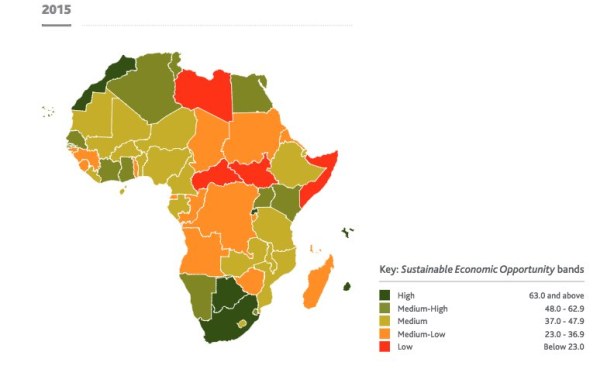
At one end of five-hectares of eucalyptus trees in Ntarama Sector is a memorial for victims of the 1994 Genocide against the Tutsi who were killed in a papyrus thicket on the banks of River Akanyaru.
There are no bodies buried inside the memorial because they all perished in the marshland, part of a deep thick swamp that runs around Bugesera District where water reeds flourish.
For a month, Tutsis hid under mud and water in the swamps while the militia and military who feared drowning, flanked hillsides, shooting and stoning their victims in the swamp.
GAERG, a graduate Genocide survivors association is yet to enumerate all the completely wiped out families in Bugesera District, but almost every survivor knows a family that was wiped out, mainly from this swamp.
While the number of the Genocide victims who were killed in the swamps around Bugesera is still unknown, at this particular place over 900 victims are named on four remembrance walls and more are yet to be added, according to Patrick Kalinda the president of Ibuka Ntarama Sector.
Some of the families that were completely wiped out valiantly resisted advancing militias who wanted to kill them.
The brave men took their spears, bows and arrows and set up outposts to block them since April 7, 1994 until the ex-FAR army opened fire on them on April 14, 1994.
Among the men at the forefront who were killed with all their families were Eustache Rwabukambiza, Raphael Ntambara, Nteziryayo and Mureganshuro among many others.
Rwabukambiza lived at Cyugaro, Rugunga Cell Ntarama Sector.
His family, including his father Andrew Bugwiza, had been forcefully displaced from the Northern Province in the areas around Gakenke District and settled in Bugesera in 1959.
Alphonse Murengezi, who was fourteen and to whom Rwabukambiza was a maternal uncle, tells a story of how he stood at the front with his bow to resist the Interahamwe from invading Ntarama.
“He had 10 children and his wife was among the women who were piling stones near the men’s outposts that they would also use to defend themselves,” Murengezi said.
On April 14, 1994 the Interahamweadvanced with the army.
Rwabukambiza and his fellow defenders of Ntarama asked their wives and children to run into the swamp as they shielded them.
The stones and arrows were a futile to bullets and grenades. Rwabukambiza and hundreds others were finally killed at Butera, between the infamous church where thousands were killed and the swamp where most Tutsis fled to.
Murengezi said that Rwabukambiza’s wife and the 10 children entered the swamp, made it to the other side in Gitarama (in Southern Province) where most drowned after they were met by killers on the banks.
“Rwabukambiza’s family was with my family. When we emerged from the swamp on the other side at Gitarama, we were attacked by the waiting Interahamwe. They all drowned including four of my siblings and my mother,” he said.
Killing two generations at ago
The family of Nteziryayo and his family of seven children and a wife were killed along with the family of his father, Sehene.
Sehene and his wife had two children (Nteziryayo and his sister).
Apart from Nteziryayo who was killed before they fled to marshland, the rest of Sehene and Nteziryayo’s family died in resistance in the swamp.
The closest survivor in this family is Edith Nyiramana whose father Vianney Hitimana (who also was killed) was a nephew to Nteziryayo and a son to Nteziryayo’s sister Mukankuriza.
Nyiramana 44 said “Nteziryayo was a teacher at Groupe Scolaire Kibungo (in Ntarama). He was famous and was taken so early before a resistance grew stronger”
After the killings at Butera, Nyiramana and the family of Nteziryayo fled to Rufunzo.
“We were as a family in the marshland. We all had grave injuries. We used to sneak out into our house when the Interahamwe had gone for lunch and get cassava flour and butter which we could mix to make medicine for injuries,” Nyiramana recalled.
Unfortunately, they were displaced in the swamp by bullets. Nyiramana found herself alone. She doesn’t know how others died but none survived.
Mureganshuro’s family comprised of four children and the wife. They were killed in an attack at Kariyeri at the main road to Nyamata town. He was a resident at Kibungo in Ntarama.
The present-day Bugesera District was formerly Kanzenze, Ngenda and Gashora communes and has the biggest number of genocide memorials.
There’re six of them including Ntarama which has more than 5,000 remains buried there.
In 1959-60s Tutsis were displaced from all over the country, especially the Northern and Southern Provinces and dumped in Bugesera. At that time it was infested by tsetse flies hoping for the worst.
Nb
Someone need to take these genocide against Tutsis with a pinch of salt. while you suppose HUTUs were killing TUTSIs what was the massive strong TUTSI army with guns and vehicles doing in its trail where they passed. Bodies floating on the lake came from areas already captured by the TUTSI army is it that they captured territory and let HUTUs massacre TUTSIs?
One may want to say that the TUTSI army were not out to revenge in any way but the story of eastern Congo and M23 tells a different story because its shown who set up death traps and camps for freeing HUTU refugees.
Lets talk about genocide in Rwanda and not make it against TUTSIs by HUTUs as it portrayed all over.
Interestingly in Kigali being called a ''Ka Hutwe'' (forgive my Ugandan spelling) is derogatory. The benefactors of a war can never write a fair history text boot, we can only read their memoirs and their opinion.



